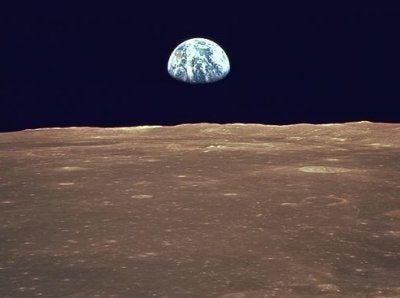As astronomers become more adept at searching for, and finding, planets orbiting other stars, it’s natural to wonder if anybody is looking back. Now, a team of astronomers that includes a professor from the Massachusetts Institute of Technology, has figured out just what those alien eyes might see using technologies being developed by Earth’s astronomers.
According to their analysis, among other things, E.T. could probably tell that our planet’s surface is divided between oceans and continents, and learn a little bit about the dynamics of our weather systems.
“Maybe somebody’s looking at us right now, finding out what our rotation rate is, that is, the length of our day,” says Sara Seager, associate professor of physics and the Ellen Swallow Richards Associate Professor of Planetary Sciences at MIT.
Most of the planets astronomers have discovered beyond the solar system have not actually been seen; rather, they have been indirectly observed by looking at the influence they exert on stars they orbit. But even with the most advanced telescopes planned by Earth’s astronomers for use over the next several years, a planet orbiting another star would only appear as a single pixel, a single point of light, with no detail except its brightness and color. By comparison, a simple cell phone camera typically takes pictures with about a million pixels, or one megapixel.
“The goal of [our] project was to see how much information you can extract” from very limited data, Seager says. The team’s conclusion: a great deal of information about a planet can be gleaned from that single pixel and the way it changes over time.
The way of analyzing the data that Seager and her co-authors studied would work for any world that has continents and bodies of liquid on its surface plus clouds in its atmosphere, even if those were made of very different materials on an alien world. For example, icy worlds with seas of liquid methane, like Saturn’s moon Titan, or very hot worlds with oceans of molten silicate (which is solid rock on Earth), would show up similarly across the vastness of space.
However, the method depends on clouds covering only part of a planet’s surface, regardless of what each world is made of. So Titan, covered by perpetual global smog, would not give up the mysteries of its weather or rotation, nor would the hellishly hot Venus, with its complete shroud of clouds.
The key, the astronomers learned after studying data from Earth’s weather satellites, is that while clouds vary from day to day, there are overall patterns that stay relatively constant, associated with where arid or rainy landmasses are. Detecting those repeating patterns would allow distant astronomers to figure out the planet’s rotation period because a brightening associated with clouds above a particular continent would show up regularly once each “day,” whatever the length of that day might be. Once the day’s length is determined, then any variations in that period would reveal the changing weather.
No telescope now in operation is capable of making the measurements that Seager and her team analyzed. But planned telescopes such as NASA’s Kepler, set for launch in 2009, would be able to discover dozens or hundreds of Earth-like worlds. Then even more advanced space observatories being considered, such as NASA’s Terrestrial Planet Finder, would allow the follow-up studies to learn about these planets’ rotation and weather, and the composition of their atmospheres, Seager says.










